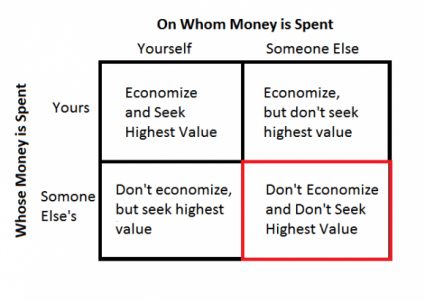This is the fourth installment of The Rationalist, my column for the Times of India.
A century ago, when India was still a British colony, some of our most prominent freedom fighters were lawyers: Gandhi, Ambedkar, Nehru, Rajagopalachari, Mookerjee and Patel, among others. It is fitting, then, that a few days ago, it was a lawyer who made an eloquent plea for freedom against a government that is arguably as oppressive, and certainly more powerful, than the British were. Remember the name: Shyam Divan.
Divan was arguing against the government’s recent decision to make Aadhaar mandatory for filing income tax returns. Previous challenges to this act, on the basis of the Right to Privacy, were held up in court, and Divan could not make that argument for technical reasons. Instead, he based his argument on a person’s ownership of his own body.
“My fingerprints and iris are my own,” he said. “As far as I am concerned, the State cannot take away my body. Others cannot act in a way that subjects my body to their interests.” Divan argued that the imposition of Aadhaar “completely takes away your political and personal choices. You are a dog on an electronic leash, tagged and tracked, your progress hobbled.”
A person’s body, Divan pointed out, could not be “nationalised.”
This is not a new argument. Divan cited both Enlightenment and modern-day philosophers during his masterful submission, and John Locke was among them. It should be intuitive that all humans own their own bodies, but it was Locke, in the 17th century, who gave the first clear articulation of this: “Every man has a property in his own person. This no Body has any right to but himself.”
What does it mean to own yourself? Well, there are three implications of this. One, for the ‘Right to Self-Ownership’ to have any meaning, you need to respect the corresponding right of others. This leads to what libertarians call ‘The Non-Aggression Principle.’ You cannot initiate violence against another person.
Two, all legitimate rights flow from this right to self-ownership. The right to free speech – for your thoughts are yours, and you should be free to express them. The right to property, which is a result of your labours, and of voluntary exchange. The right to interact with any other consenting adult in any way you wish – economic or personal – that does not hurt anyone else.
Three, because a situation where every person has to fend for themselves is unviable, and likely to be violent, the state is a necessary evil. It commits some violence on the people – for taxes are violence – but only to the minimum extent required to protect our rights. Note that these rights are not granted to us by the state, as if they are favours. Instead, we have these rights to begin with, and we have brought the state into being to protect them. The purpose of the constitution is to limit the power of the state, and not to be, in Divan’s words, “a Charter of Servitude.”
Here, then, are the two visions of the state. The old one, where the people are mere subjects, ruled by the state, for all practical purposes owned by the state. The modern one, in which the state is an instrument of the people, tasked only with protecting their rights.
Deep inside the belly of any modern state, though, is the old one waiting to spring forth. Governments consist of humans, who are corrupted by power. The state, with its monopoly on violence, has tons of power. Thus, states tend to grow endlessly, and become an ever-present parasite on its people.
Divan’s argument was based on personal autonomy and consent, and the attorney general of India, Mukul Rohatgi, was ready with a response. Indians do not have a right over their own bodies, he said, adding that there are “various laws which put restrictions on such a right.” This made for a shocking headline, but he was stating the obvious.
India is a country where you can go to jail for what you say or what you eat. There are countless restrictions on markets, which are basically networks of voluntary exchanges. (If two consenting adults can be put behind bars for engaging in an act that infringes on no one else’s rights, can they be said to own themselves?) There are laws against victimless crimes (like gambling and alcohol). And there is an arrogant condescension by the state towards common citizens, as if it exists to rule us, and not to serve us.
Our constitution paid lip service to individual rights, but did not do enough to safeguard them. It will not save us – and thus, nor will the Supreme Court. It is up to us to snap out of our apathy and declare, as that battery of lawyers did a century ago, that we will not be ruled any more, that we own ourselves.
What is your view on this? Do you own your body?
